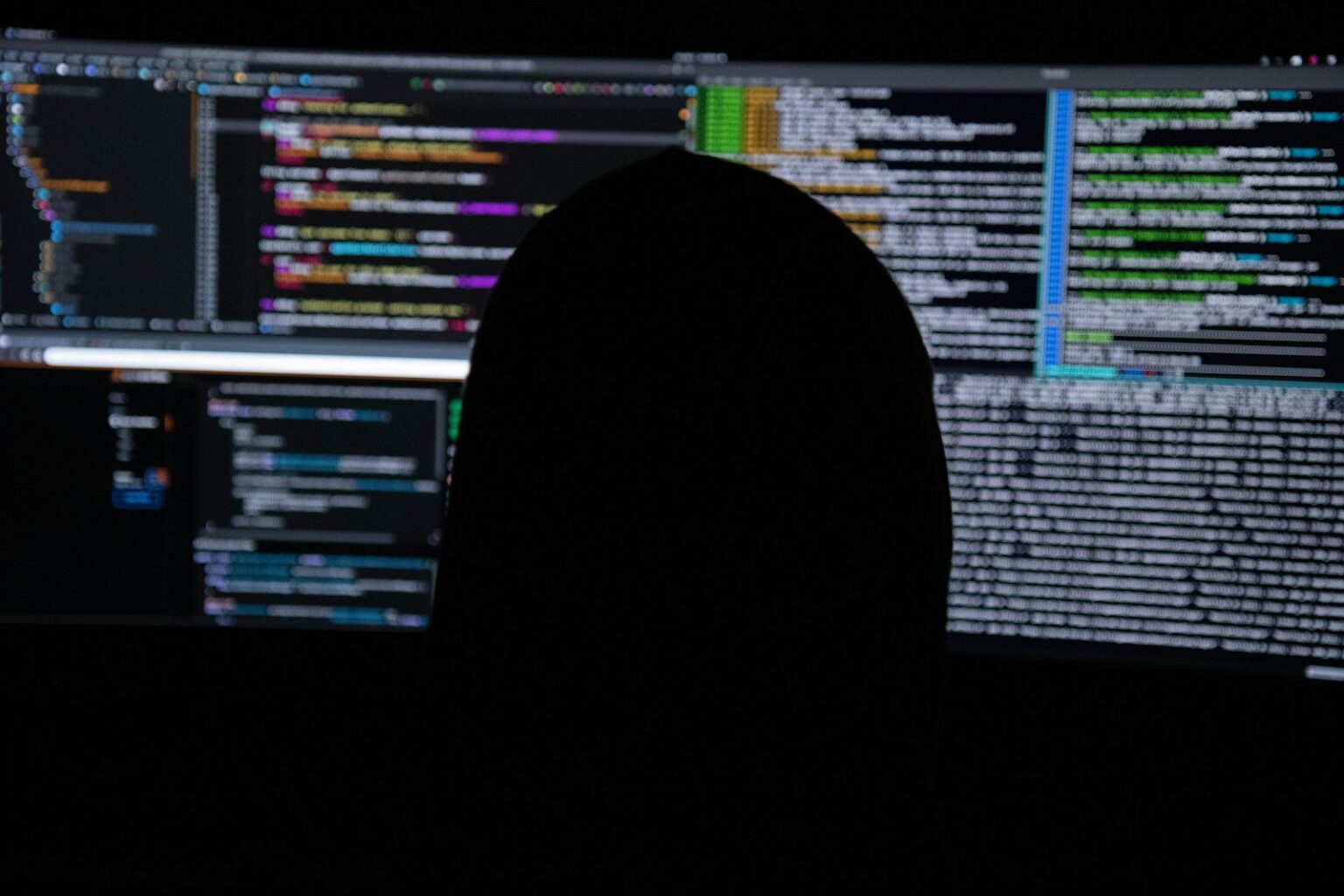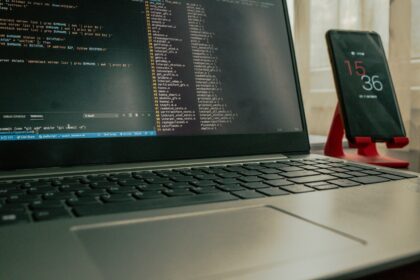Most of us work with documents every day-whether we write a report, build a budget in Excel, or pull together a presentation. Within those files there is often a feature called a macro. Simply put, a macro is a mini programme that repeats steps for you. It wipes out the need to copy-paste, format, and clean up again and again. Click once, the macro does the rest, and you feel a little more in control of your to-do list. Yet that same little helper hides a darker side. Anyone with bad intentions can stuff harmful code into a seemingly friendly macro. Instead of sorting rows, the file starts stealing passwords, wiping data, or sending spam. It is a growing red flag for security teams, so let us break down the risk and line up some easy shields you can use every day. We will explore in detail how do macros pose a cybersecurity risk to users and organizations.
What exactly are macros? Think about that table you format over and over: applying bold headers, locking borders, colouring totals, and centering dates. Doing it by hand each time is boring, so a macro sits quietly, notes every click, and promises to repeat the whole dance the next morning. Click a button, watch the magic, and you just saved ten minutes you can spend on coffee instead. Office software-Winword, Excel, PowerPoint, and a few others-all cheerfully swallow macros because they run on VBA, or Visual Basic for Applications. VBA is flexible and fairly easy to learn, which is why office clerks, junior analysts, and even small-business owners write their own fancy scripts to tackle the weekly grind. This same openness, alas, gives kayak-surfing hackers room to slide in with malicious code, turning a time-saver into a disaster within seconds.
The History of Macro Malware: A Blast from the Past
Macros aren’t a fresh danger; they’ve haunted users for decades. Back in the late 1990s, macro viruses roamed freely. They spread from file to file almost overnight. All it took was someone opening an infected document, and the code jumped to local drives and email lists. The typical sequence was silent: the macro ran, files changed, copies went out to contacts, and the cycle renewed. The most notorious example, the Melissa virus in 1999, clogged mail servers worldwide and caused millions in losses, proving how a simple macro could disrupt daily business on a global scale. This historical context clearly shows how do macros pose a cybersecurity risk, even in the early days of the internet.
Following that wake-up call, software developers tightened the bolts. Warning pop-ups emerged, and macros stayed disabled by default. Those fixes worked for a time, cutting the volume of macro-borne attacks and pushing many criminals to chase flashier exploits. Yet cyberdefenders know today’s clever adversaries rarely abandon old tools; they simply repackage them. Instead of raw code, attackers now craft convincing emails, promising invoices, trip vouchers, or tax documents and urging victims to flip the macro switch. That gambit, built on social trust, breathes new life into macro malware, reminding everyone why vigilance and fine-tuned security settings remain vital.
How Macros Work (Simply)
Imagine you’re trying to bake. You grab flour, follow steps one through ten, and in half an hour there’s cake on the table. A macro works exactly the same way. Instead of measuring sugar, though, it measures keystrokes and commands for your computer. Its little script says Open this folder. Copy that chart. Paste it into the email I just wrote. Hit Send. All done. You barely have to move your mouse.
When you double-click a file packed with macros, your software peeks inside and tries to guess if the orders are safe. Most of the time it pauses first, asking Do you really want to run these steps? That’s the part everyone’s seen and probably clicked past without thought. If you tap Yes, every line fires off. If a line was written by a thief, it can grab your documents, ping a remote server, or even slip in a password logger. Because macros run inside Office apps that employees trust, they sidestep the usual guardrails we set up against stranger software. Knowing this difference is why the security world keeps warning about macros. Understanding that trust gap is the first step in closing it, and it’s fundamental to comprehending how do macros pose a cybersecurity risk.
The Core of the Risk: Malicious Macros
In the hands of a cybercriminal, a helpful little script mutates into a digital car-jacker. The attacker builds a file that looks like a dull invoice or shipping notice. The moment someone opens it, the hidden macro scans for weak antivirus, kills the alert, and then downloads a second wave. That wave might record keystrokes, zip passwords to a basement server, or quietly add the PC to a network of hijacked machines. The beauty of the trick? The victim never sees a strange program appear on-screen. The clean invoice is still sitting there, appearing as normal as last month s phone bill.
Phishing and Social Engineering
Phishing still tops the list of everyday attack tactics. Cybercriminals fire off a batch of emails that look almost real. They might claim to come from your bank, a courier service, or even your own manager. Each message often includes an attachment, usually a Word document or an Excel sheet. Open it and a pop-up greets you with some friendly-sounding line. It could say, “Content is protected. Please enable macros to view.” Or, “This document was created in an older version. Enable editing to see full content.”
That message is the bait. Once you click Enable Content or Enable Editing, the door swings open. You have, unintentionally, given permission for the harmful code to run. This trick works because the attackers play on human nature. They look for trust, curiosity, or the simple urge to keep things moving. By hijacking those instinctive reactions, they turn a common office tool into a serious threat. This is a primary example of how do macros pose a cybersecurity risk through human manipulation.
“The human element is often the weakest link in cybersecurity. Attackers know this. They target our natural curiosity and our desire to be helpful.”
Content from books and events is often blurred together, so instructors occasionally use a quick handwritten note. A pen-and-paper approach lets them add jokes, draw arrows, or circle an item someone clearly did not catch, all in real time. Although researchers try to stop that habit, every observer can point to moments when side-margin summaries were way more enlightening than the printed chapter from which they came. The collision of rough marks and polished text gives an honest glimpse of how comprehension really grows.
Obfuscation Techniques
Once inside an attachment, attackers use obfuscation to cloak their code. They jumble letters, swap ordinary commands for look-alikes and slice the routine into tiny slices. That makes it tougher for scanners to flag the file and even tougher for a human analyst to read on first glance. Security teams bet on quick heuristics, so if strings, punctuation, and spacing look purposeful, many samples slip past cataloging. Hidden behind all that nonsense is the real goal- a macro that runs quietly and uninvited.
Payload Delivery
When the macro executes, it hands off the payload, or harmful software. From that single step many damages might follow, starting with ransomware that locks up all files and demands money for a key that could be real or fake. Spyware, by contrast, hides itself yet watches the victim constantly, logging clicks and stealing passwords in low-profile silence. Trojans take another route, leaving a secret backdoor so operators can enter later with full remote control. Keyloggers resort to brute honesty, recording every keystroke, usernames and credit card numbers included.
- Worms: these nasty programs crawl from one machine to another until whole networks are in trouble.
The payload is the final goal. The macro, in this case, is just the delivery truck, a Trojan horse that looks plain. The document appears harmless, but deep inside it carries a dangerous enemy. That is a straightforward illustration of how do macros pose a cybersecurity risk and enable the delivery of various malicious software.
Why Macros Are Still a Threat
Still afraid of macros? You might think we should not be, not with today s stronger security tools patrolling the office. But macros keep getting opened. Here are a few reasons they still pack a wallop:
- Trust in Familiar Files: People trust Word and Excel documents because they see them every day on every desk. They double-click those icons, hunching it cant possibly be malware. That blind trust gets exploited over and over.
- Bypassing Traditional Defenses: Most scanners are trained to howl at .exe files. Macros live beneath the surface, tucked inside .doc or .xls attachments, so they sneak past older guards unnoticed.
- Social Engineering Effectiveness: The prompt to enable macros pops up, and the trick still works. Employees are busy, scanning emails quickly, leaving little room to read every warning detail.
- Legitimate Functionality: Macros were built to save time, and, honestly, blocking them entirely would pinch normal business operations, so ITs left trying to tame a helpful beast.
Real-World Examples and Anecdotes
Not long ago I met Sarah, a local bakery owner. One busy morning an invoice popped up in her inbox, apparently from a trusted supplier. Because she was already behind on orders, she quickly opened the attached Excel sheet. Across the top she saw the familiar grey ribbon: Macros disabled. Please Enable Content to view the document. In her rush she hit that tempting button.
The change was instant. The screen dimmed, her mouse juddered, and a pop-up demanded that every file on her laptop be freed-for a price in Bitcoin. She learned the hard way that macros, when engineered by a hacker, can turn a simple spreadsheet into a virtual hostage-taker. Days later, after restoring from backup and paying a small fortune to an IT specialist, Sarah regained access. Her story is a reminder that even honest-looking emails can carry very nasty surprises, highlighting how do macros pose a cybersecurity risk to small businesses.
Another everyday scam starts with a seemingly normal job application. A recruiter gets a polished-looking Word resume in an attachment. At first glance everything appears fine, even the formatting is on point. Hidden, though, is a macro waiting for the user to enable content. Once that tiny switch is flipped, the code springs to life. It might slip on spyware that quietly watches keystrokes and snags files. Minutes later the attackers have sensitive interview notes, payroll data, even login credentials. One innocent click can derail the entire hiring pipeline. And incidents like this are no longer rare; they unfold around the clock.
Common Attack Vectors: How Malicious Macros Spread
Malicious macros don t simply materialize on computers. Someone must deliver the payload first. Here are the paths security teams see most often:
- Email Attachments: This remains the leading channel. Phishing messages disguised as shipping alerts, invoices, or meeting notes carry infected docs. The tone is urgent, and the sender seems familiar.
- Malicious Websites: Occasionally a tempted user downloads a file from a link shared in a forum. The site itself might be hand-coded by hackers, or a cracked page re-directed. Either way, the Word doc can hide a dormant macro.
- USB Drives: Thumb drives passed between co-workers at conferences still circulate infected files. Plug one in, double-click the icon, and the malware leaps across the network map. Sparking that old-school infection chain is less common, yet still entirely feasible.
Impact of a Macro Attack: What Happens Next?
When a rogue macro gets the green light to run, the fallout can be serious. Most of the damage hinges on what the attacker packed inside, yet the verdict remains grim for your data and your privacy.
- Data Theft: Family photos, tax documents, contracts-just about any file can vanish. Secrets that keep a business a step ahead may leak out, too.
- System Damage: The underlying operating system is often not spared. Files may vanish, apps can be left half-working, and the machine may refuse to boot or crash frequently.
- Network Compromise: Plugged into a local network? Think bigger. One infected device can pass on the code, eventually trashing dozens, if not hundreds, of endpoints.
- Financial Loss: For many users, a ransom note popping up is a menacing reality. Even without that, stolen credit cards and login info fuel quick fraud. Companies bleed money from idle staff and the scramble to fix things.
- Identity Theft: Absorbed names, addresses, and account numbers become new weapons. Rebuilding a stolen identity can haunt victims for years and wreck personal credit reports.
The range of possible harm is alarming. Losing files hurts, yet losing trust and control hurts more-and that is the heart of why macro threats demand serious attention. This clearly demonstrates how do macros pose a cybersecurity risk with far-reaching consequences.
Mitigation Strategies for Users: How to Protect Yourself
Staying safe from macro malware is within reach, but it calls for awareness and a few simple habits. With the right steps, users can greatly cut their risk, allowing them to open documents without constant dread. Here are straightforward guidelines to help you defend your devices.
- Disable Macros by Default: Almost every office application now comes with macros switched off straight from the box, and thats where they should stay. Turning them on again is a ride reserved for power users who truly grasp scripting code. If you have not scrutinized the source yourself, leave the setting alone.
- Be Wary of Unknown Sources: Attachments from unfamiliar contacts are almost always suspicious, so treat them that way and think before you click. Even files from a friend can carry hidden code, especially if their email was spoofed or hacked. When in doubt, pick up the phone or send a fresh message to verify the request, because fake addresses abound.
- Use Antivirus Software: A reliable antivirus tool works in the background, scanning incoming files and flagging red flags that the eye may miss. Make sure the software is not only present but also fed regular definition updates, so it learns about fresh threats. Many suites include real-time scanning that previews attachments before they are opened.
- Keep Software Updated: Patching the operating system and every installed app might seem tedious, but those updates often seal holes that attackers love to exploit. Set updates to install automatically when possible, then confirm they actually run. Even browsers and plug-ins need attention, since they can serve as entry points for malicious macros.
- Educate Yourself: Phishing scams shift shape from month to month, yet a little study makes you far less vulnerable. Follow industry blogs, watch demo videos, or read quick guides that explain common tricks and social-engineering playbooks. A curious, cautious user is the best defense, because knowledge turns hesitation into the ability to spot a fake at a glance.
- Back Up Your Data: Make it a habit to save copies of your files on a regular schedule. Keep these copies in a spot thats apart from your main system- an external drive in a drawer, or space in the cloud. If ransomware hits, you can wipe the infected machine and pull your documents from the backup. Theres no need to hand over money to unknown attackers.
Mitigation Strategies for Organizations
When a macro attack targets a company, the potential damage climbs fast. Production lines can stall, customer data may be inaccessible, and recovery costs can soar into the millions. To shield against this threat on a larger scale, decision-makers should adopt the following steps to manage how do macros pose a cybersecurity risk:
The Future of Macro Threats
Will macros fade away? Not likely, because they still let Office files automate tedious work and that appeal wont vanish overnight. Cybercriminals study their targets and tweak techniques, so macros will stay on their radar long after an experts latest warning. Staying informed and vigilant is key to understanding how do macros pose a cybersecurity risk in the evolving threat landscape.
Conclusion
Macros are handy little bits of automation that turn dull, repetitive chores into a few quick clicks. Because of that alone pop, professionals everywhere lean on them to save time and muscle. Yet the same feature can be hijacked in the wrong hands, and that is where the risk suddenly feels weighty. Crooks slide their harmful code into phishing notes, coaxing people to switch macros on with tempting headlines and false promises. From that moment the door swings open; malware floods in, snatching files, scrambling systems, and sometimes even draining bank accounts. Grasping that link between macros and cyber threat is something every user needs on their radar. Understanding how do macros pose a cybersecurity risk is crucial for everyone’s digital safety.
So be alert, slow down before you click anything, leave macros switched off until you are absolutely sure they come from a trusted source, and shield yourself with regular software updates, strong anti-virus programs, and a curious, proportionate dose of self-education about emerging scams. Treat those habits like everyday security lint in your digital pocket, and you will trim the chances that the friendly little macro turns into a disaster on your screen.
























